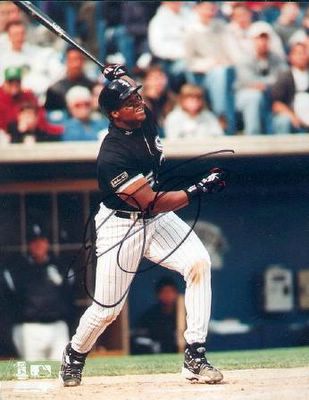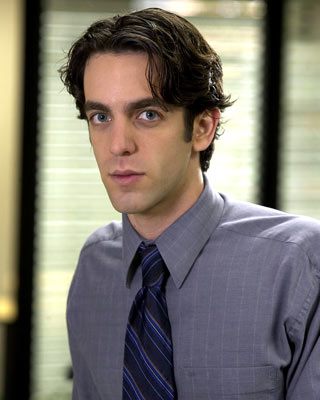There are probably fewer things more frustrating to a sports fan than watching an expensive, recently imported veteran player repeatedly fail in his efforts to help the team. The more prior success he's had, the more money he's making, the more you had to give up to get him...well, that all just makes it worse.
And then there's Javy Vazquez.
Vazquez had all of those things against him:
- He was probably one of the five best pitchers in the Senior Circuit last year,
- He's guaranteed $23 million combined this year and next, and
- The Yankees traded their young centerfielder, inexplicable fan favorite Melky Cabrera, plus two pitching prospects and half a million dollars to get him.
In addition, Vazquez had the ghost of his former, unsuccessful stint in the Big Apple looming over his head. Despite high hopes for him last time he came to New York, and an impressive first half, Javy Vazquez left New York in ignominy having walked five batters and surrendered two home runs to some bearded, homeless hippie, making the Yankees the first team in over a hundred years of professional baseball playoffs to ever lose a series they had led three games to none.
Granted, Kevin Brown gave up five runs all by his lonesome, and the Yankees only scored three all day, so it's not like Vazquez really made things much worse, but his efforts out there put the game ostensibly out of reach, and that's what everyone remembers.
Still, in the intervening time, he's been nothing if not consistent. Heck, "consistency" is Vazquez' calling card. He's the only pitcher in baseball who's provided his teams with at least 32 starts, 190 innings and double digit wins every season since Y2K, the very definition of LAIM. Granted, his ERA has fluctuated by more than two whole runs from year to year, but the innings are there and he's occasionally been something close to brilliant.
This is, perhaps, what many Yankees fans thought they were getting when the Vazquez trade was completed this winter, but the Yankees had no right to expect that. They've now bought high twice on Javier Vazquez - he set personal career bests in ERA, adjusted ERA, and virtually every rate stat last year - but at least this time they didn't give up the kinds of prospects you usually have to surrender for an ace.
They only really need him to be a good #4 (or perhaps #3) starter, since the heavy lifting is supposed to be done by CC Sabathia and A.J. Burnett, and perhaps Andy Pettitte or Phil Hughes, if he comes into his own. The trouble is that Vazquez has been, in three of his four starts, anyway, God-awful. In the other one he was just bad.
There is some hope in that Vazquez seemingly has hit into some poor luck so far this year. He is still striking batters out at just about his career rate, a little over eight batters per nine innings. Also, his BABIP (batting average on balls in play, something over which pitchers have little if any control) is .345 this year, compared to a career average of .302 and a major league average that is perennially about the same as that. Both of these facts are encouraging, but that's about all the encouragement you can get out of his performance so far this year.
Still though, he's only had 58 at-bats where the ball has been put in play this year, so the difference between .345 and .302 is generously speaking, three hits. That, my friends, is not the difference between Vazquez's current 9.00 ERA and the expert projections, which generally put him in the range of about 3.50 to 3.75 or so.
What's more worrying is that much of the stuff he can control is also way off his career rates. He's allowed five homers in only 20 innings of work, after taking more than twice as long to allow his 5th homer last season. He's also walked a good number of batters - 11 of them in only 20 innings - so that both his homer and walk rates are more than double their 2009 levels.
He has faced pretty stiff competition - two games against the defending NL West champion LAnahfornia Angels, one against the first place Tampa Bay Rays and one against the upstart Oakland A's, also in first place right now. Still, though, part of a pitcher's job, especially on the Yankees, is to be able to beat teams they might face in the playoffs, and so far Javy has shown little ability to do that.
The change to the generally higher quality batters of the American League probably isn't helping either. KFFL.com reports that Vazquez' record against the NL since 2008 is 16-10 with a 3.28 ERA, but that against the Junior Circuit he's just 12-19, 4.71. Even that, however, is a far cry from how terrible he's been to this point in 2010.
The most troubling part is that there seems to be a real, tangible reason for the lack of success so far this year. According to FanGraphs, Vazquez' fastball is almost two and a half miles per hour slower this year than last, an average of 88.8 mph, compared to 91.1 last year, and 91.3 mph in his career.
He's only pitched 20 inning so far this year, but he's thrown just about 400 pitches, and about half of them have been fastballs, so we have a decent idea of what he can do. The percentages of each pitch thrown (slider, curve and changeup) are about the same as usual, so it doesn't seem like he's favoring one of his offspeed pitches to compensate for what he's lost on his fastball, just that his fastball isn't what it used to be.
I don't think it's simply that he's still building arm strength, as he had about 19 innings of official work in spring training, about the same as Sabathia, and Burnett both of whom are generally pitching well. And their fastballs are within 0.9 mph of last year's averages.
Joe Girardi says that Javy's issues are mechanical, that he "gets under the ball", whatever that means. You would imagine that a guy who has thrown nearly 35,000 pitches in major league games in the last decade, more than anybody this side of Livan Hernandez, would have a pretty good idea of his mechanics by now. But still, maybe there's something to that. Maybe there's a way to tell if Vazquez is messing up his delivery somehow.
If he were "getting under the ball" you would imagine it would show up somewhere. Or if "getting under the ball" were so terrible for a pitcher, you would imagine it would be tough to pitch a complete game against a major league team and allow them only one run on three hits, while striking out seven and walking one right? Yes, even the Nationals.
For what it's worth, the game charts for this past Sunday's lousy start against the Angels do not show any appreciable difference in release point when compared with a start from late last year, a one-run complete game against the Washington Nationals.

20 April 2010, Javy Vazquez vs. Angels

25 September 2009, Javy Vazquez vs. Nationals
One potential explanation to consider is that Vazquez is having trouble with his two-seam fastball. The main page of FanGraphs lumps his fastballs all together, but when you go to the Pitch f/x pages, they separate his regular four-seam from a supposed two-seam fastball, which he only started throwing last year (4.6% of the time). This year he's throwing it 10.8% of the time, more than twice as often as he did in 2009.
Here's where it gets really sketchy and speculative, because we don't know much about this alleged two-seam fastball, including whether it even exists (more on this later).
It's possible that...
- ...having lost his feel for the pitch, he's trying to throw it more to regain that feel.
- ...having lost confidence in his "stuff", he feels a need to throw the 2-seamer more often to keep batters honest.
- ...he's experimenting with a new grip on the two-seamer and hasn't quite got it yet.
In any case, while I think four starts is a little too soon to start giving up on Vazquez - he has, after all, had similarly poor streaks in the past, but has always bounced back - the drop in velocity is somewhat troubling. Part of Joe Girardi's job is to keep the peace and to protect his players, so naturally, he's not going to lay into his pitcher whenever the beat writers are looking for an explanation. Naturally, he's going to say it's a mechanical glitch and that they're working on it and that he'll be fine.
But if there's something wrong, like really, physically wrong with Vazquez already, of if the mechanical glitch that's causing the drop in velocity is also causing stress on his arm that could lead to an injury, well, then we've got a real problem. My best guess is that within the next two or three starts, if we don't see some real improvement, Vazquez may end up on the disabled list for the first time in his career.
UPDATE: Curt Schilling (of course) has an opinion on the matter too. Silly me, it's not his fastball slowing down or a possible injury. It's Vazquez not being "equipped" to get outs in the American League. My bad.


















